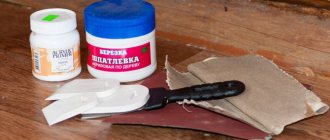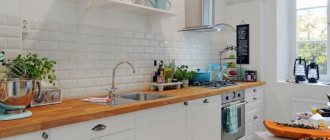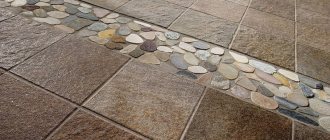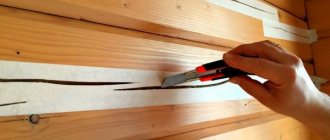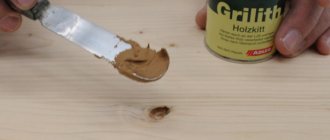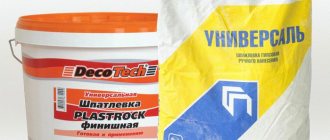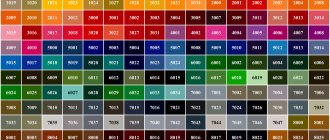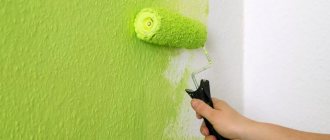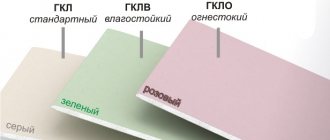-In addition to universal putties for finishing work, there are a number of specialized mixtures for simulating wood. First of all, the difference between them is in the color scheme - universal putties are either white or tinted to match a specific paint. When repairing flaws in wood - chips, fallen knots, dents and nicks - it is very important not to spoil its natural appearance.
What types of wood putties are there with examples and photos, their advantages and disadvantages, application rules, an overview of leading manufacturing companies - further in the article.
Types of putties
In addition to the color scheme that imitates wood species (pine, oak, alder, ash, spruce and others), there are differences in the chemical composition of various putties. They are divided into the following types:
- putties based on synthetic solvents;
- water based;
- oil;
- polymer;
- plaster.
Putties based on synthetic solvents
These also include nitro putty. They were among the first to be developed for working with wood, and have not lost their relevance today.
They have good mechanical strength, dry quickly, but before complete drying they emit an unpleasant, pungent odor and are toxic, so you need to work with them while protecting your respiratory organs with a respirator, in a ventilated room, or better yet, outside. They are used in the restoration of floors and parquet due to their increased abrasion resistance.
Wood coating composition
Wooden floors have always been and will be the most in demand. Wood is warm, beautiful and durable, but it can accidentally suffer from a blow or exposure to parasites. Wood putty not only helps to mask major defects, but also protects against dampness, insects and harmful rodents.
You can putty the floor covering both during installation and in case of repair of an outdated floor. If you see that there are cracks in the parquet, quickly lubricate them with putty of a suitable color.
If we talk about installing a new floor, for example, the same parquet, then before final varnishing it must be puttied over the entire area . This will make the base smoother, waterproof and even, and the varnish will cover the floor better. In this case, the putty is applied using a spatula, every crack and hole is carefully processed.
Water based
Unlike synthetic solvents, water is not toxic and does not have a pungent odor; therefore, water-based putties are harmless to humans and animals at all stages of work and upon completion. It dries relatively slowly and has good adhesion, which allows it to be applied to carefully sanded and even polished wood.
Read here! Chandeliers. What styles are there?
To wipe off excess from the surface, simply use a damp cloth. After complete drying and varnishing, it is not susceptible to moisture. It is elastic, has a long service life, is fireproof and is not susceptible to heat and cold.
Purpose and application
The main task of putty is to restore the integrity of wooden structures. Using this tool, several issues can be easily resolved at once:
- sealing gaps and cracks in the wood structure, joints and seams when connecting two wooden elements, as well as leveling the surface topography;
- creating a protective layer that will be a powerful barrier to moisture and contaminants trying to penetrate the material;
- increasing the wear resistance of wooden structures and preventing the occurrence of rotting processes and the formation of fungus on the surface;
- makes it possible to create a single shade for subsequent painting of the product;
- restoration of the appearance of old materials, after which they look like new;
- improves adhesion when applying decorative elements.
All that is needed from the putty is to create a horizontal layer for subsequent decorative work. Otherwise, the result will not meet the owner’s requirements. In order for construction work to be carried out efficiently, it is necessary to choose the right means, which must meet the following requirements:
- the putty must contain plasticizers;
- the mixture should ensure good adhesion of materials;
- absence of toxic and harmful components that adversely affect the human body;
- dry quickly for further processing.
Wood putty is presented as a ready-made mixture and does not need to be diluted with water, as dry putty materials require. It is widely used for processing wooden structures of the Soviet period, as well as completely new products, restoring old parquet and other surfaces.
Oil based
The only type of wood putty suitable for outdoor work; it can be used outdoors even without further varnishing or painting. Suitable for processing wooden facades.
It has strong water-repellent properties, is not afraid of ultraviolet radiation, exposure to open air, including sea air. Available in packaging from 500 grams to 15 kg.
We decide on the manufacturer
In Russian construction stores you can find various putties for wood for painting and varnish from foreign and local manufacturers - of different prices, volumes, composition and “wooden” shade.
Among the foreign ones, the most recognized is the Tikkurila special-purpose putty. It perfectly removes unevenness, copies the color of birch (oak, pine), and is suitable for rooms with any climate. Acrylic mixtures are popular: “Lakra” is suitable for any parquet, VGT is ideal for painting, “Eurotex” combines excellent quality and a very affordable price tag. The main rule is that wood-look acrylic putty should be spread in a layer no thicker than 1-2 mm, otherwise it will crack and the work will have to start again.
Among the Russian brands, the best and most affordable are “Extra”, which perfectly seals small “jambs” in wood, cracks and knots, “Rainbow” - dries quickly and adheres perfectly to the surface, and the well-known brand “Tex”.
Many types of finishing materials are produced under the Russian trademark "Tex"
Polymer
Polymer, also known as acrylic wood putty, is currently more common than others. This is due to its relative cheapness, durability, ease of use, good water-repellent properties, elasticity, and low shrinkage coefficient when drying.
Thanks to the modifiers it contains, it is suitable for both living rooms and rooms with high humidity (bathroom, toilets, sauna, kitchen). Also good for restoration of parquet and floor boards.
DIY creation
The putty mixture for wood flooring has one important advantage - if you really want, you can create it yourself. Of course, such work requires some time and effort. But if you don’t have enough money and you have a lot of work to do, and the quality and environmental friendliness of the putty mixtures in the store are in doubt, then you can try to create the mixture yourself.
The lightest and most time-tested putty would be crushed chalk with the addition of PVA glue and diluted to a thick consistency. If the wooden covering is too old or has multiple irregularities, then for the old layer you can add a small amount of sawdust to the mixture. One condition must be taken into account - due to the PVA glue in the composition, such a coating dries within 24 hours.
Elastic wood putty can be prepared at home as follows: take chalk and water-soluble varnish (for example, Irkom) and mix until a liquid paste is formed. Varnish is considered a plastic and viscous material , so a composition that is too thick can be easily diluted with water. Experts also recommend adding a little sawdust to the leveling layer (this mixture is prepared one night, the sawdust swells well during this time).
The more popular homemade putty includes ingredients such as turpentine (60 grams) and linseed (280 grams) oils, pumice or perlite based powder (30 grams), gelatin and casein (20 grams each), borax (12 grams) , ammonia (18 percent, 18 grams). First, mix pumice and oils, add 300 grams of water, and stir the mixture continuously until a more homogeneous composition is obtained. After that, all the remaining ingredients are added to it, the composition is placed in a water bath of 90 degrees Celsius and actively mixed until a homogeneous paste is obtained. After cooling, the product can be used for work.
Application rules
The wood on which the putty will be applied is rough sanded, then dust is removed from it with a brush and a rag, or even better, blown off with a pneumatic gun. Next, apply a spatula with a small slide to the flaw. No matter how much manufacturers praise their product, the putty still shrinks when it dries.
Opinions differ about wood primer. The fact is that putty holds much more firmly on “bare” wood. But after removing its excess, stubborn stains of ingrained putty remain on the wood around the repaired defect.
A primer solves this problem, but the adhesion of the putty to the primed wood is noticeably worse. It is advisable to keep the spatula clean - this will simplify the work. If you need to apply a thick layer, you need to do it in several passes, allowing the intermediate layers to dry. After drying, excess putty is removed with sandpaper.
Advantages of wood putty
Carrying out putty work on a wooden surface means processing various surfaces: cracked Soviet-made frames, new doors, old or, conversely, beautiful and expensive parquet. Wood putty has many advantages:
- A layer of putty on a wooden surface repels moisture and does not allow it to be absorbed - this means that the wooden product and the coating in the house will last you a long time and remain dry.
- A good mixture helps smooth out all the cracks, natural defects and knots that natural wood cannot do without.
- After drying, the coating begins to become transparent or acquires a pattern that is inherent to the surface, so all wooden objects in the interior can not only be painted, but also have decorative varnish applied to them.
- The mixture for parquet flooring adheres well to it, filling all the holes and imperfections that arise due to use over the years.
